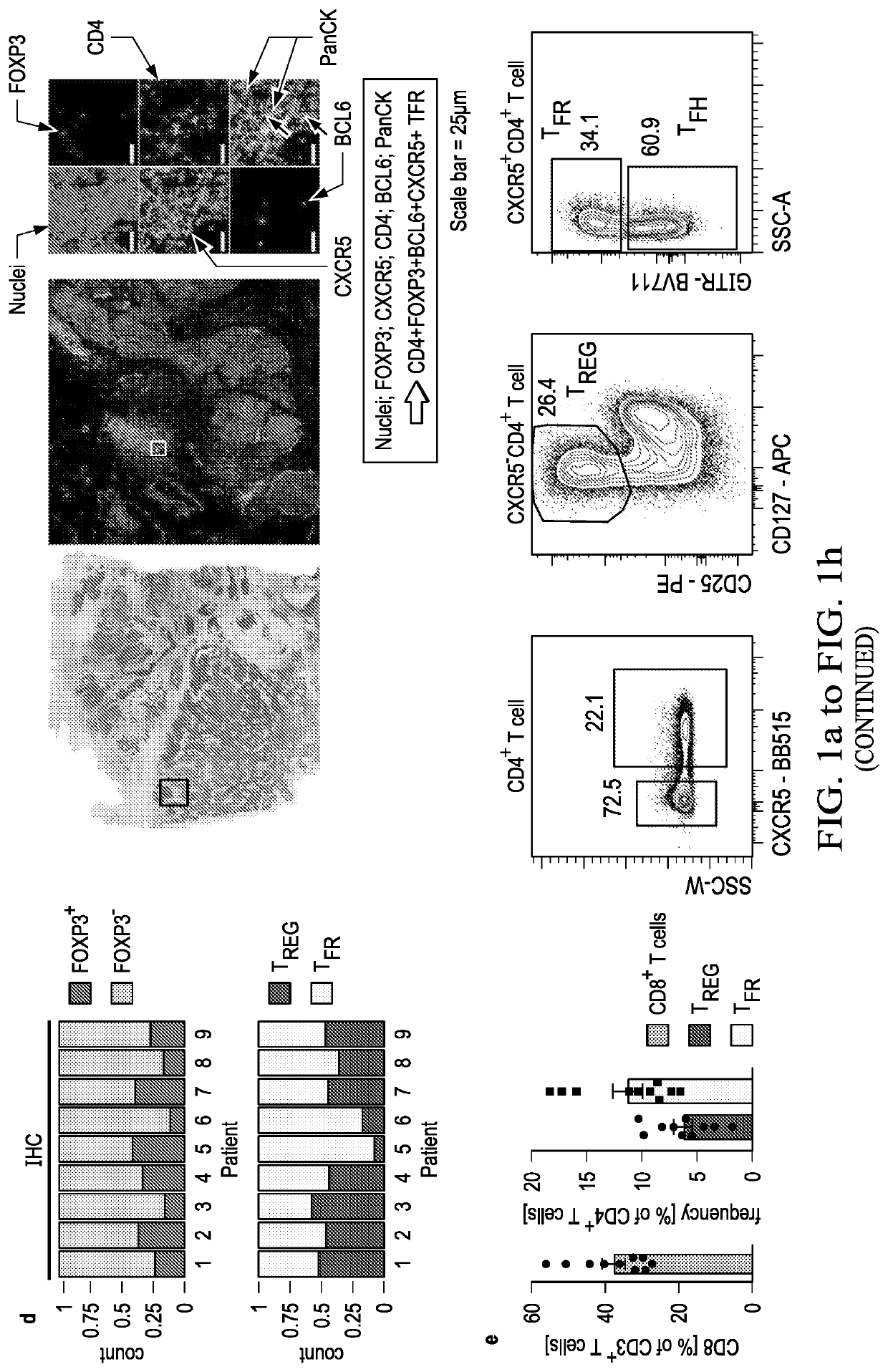Intratumoral TFR Cells Curtail Anti-PD-1 Treatment Efficacy
a tfr cell and anti-pd-1 technology, applied in the field of cancer immunotherapy, can solve the problems that the anti-pd-1 therapy cannot only facilitate, but also dampen the anti-tumor immune attack, and limit its us
- Summary
- Abstract
- Description
- Claims
- Application Information
AI Technical Summary
Benefits of technology
Problems solved by technology
Method used
Image
Examples
example 1
Cells Inhibit Anti-Tumor Immunity and are Responsive to Immune Checkpoint Blockade
[0046]An increased density of regulatory T cells (TREG) in tumors has been linked to poor survival outcomes1. In non-cancer settings, TREG cells have been shown to differentiate into PD-1 expressing follicular regulatory T cells (TFR) that restrain germinal center responses2. It is not known whether such differentiation also occurs in the tumor microenvironment, and if so, whether such tumor-infiltrating TFR cells are molecularly distinct from TREG cells or are activated by anti-PD1 therapy. In this example, the inventors show that TFR cells are present in high numbers in human and murine tumor tissues, share T cell receptor (TCR) clonotypes with intratumoral TREG cells and express high levels of PD-1. Single-cell TCR data, trajectory analyses and adoptive transfer studies indicate intratumoral conversion of TREG to TFR cells. When compared to TREG cells, TFR cells exhibited enhanced suppressive capaci...
example 2
of TFR but not Tregs to Prevent Severe Immune-Related Adverse Events (irAEs)
[0085]Immune checkpoint blockade (ICB) targeting CTLA-4 or PD-1 can lead to dramatic, long-lasting responses; nonetheless, fewer than 30% of patients respond to monotherapy with either agent. While anti-CTLA-4 therapy is believed to deplete T regulatory (TREG) cells, anti-PD-1 blocking antibodies are thought to primarily activate CD8+ T cells. Combination therapy, though more effective, causes more frequent and severe immune-related adverse events (irAEs), potentially caused by undirected anti-CTLA-4-mediated TREG cell depletion and subsequent uninhibited anti-PD-1-mediated activation of effector T cells. As described hereinabove, a novel population of T cells, follicular regulatory T cells (TFR), are a district population of regulatory T cells that inhibit CD8 T cells. As shows in the example above, by increasing the abundance of TFR cells, anti-PD-1 therapy not only facilitates, but also dampens anti-tumor...
PUM
| Property | Measurement | Unit |
|---|---|---|
| density | aaaaa | aaaaa |
| frequency | aaaaa | aaaaa |
| mean fluorescence intensity | aaaaa | aaaaa |
Abstract
Description
Claims
Application Information
 Login to View More
Login to View More - R&D
- Intellectual Property
- Life Sciences
- Materials
- Tech Scout
- Unparalleled Data Quality
- Higher Quality Content
- 60% Fewer Hallucinations
Browse by: Latest US Patents, China's latest patents, Technical Efficacy Thesaurus, Application Domain, Technology Topic, Popular Technical Reports.
© 2025 PatSnap. All rights reserved.Legal|Privacy policy|Modern Slavery Act Transparency Statement|Sitemap|About US| Contact US: help@patsnap.com



